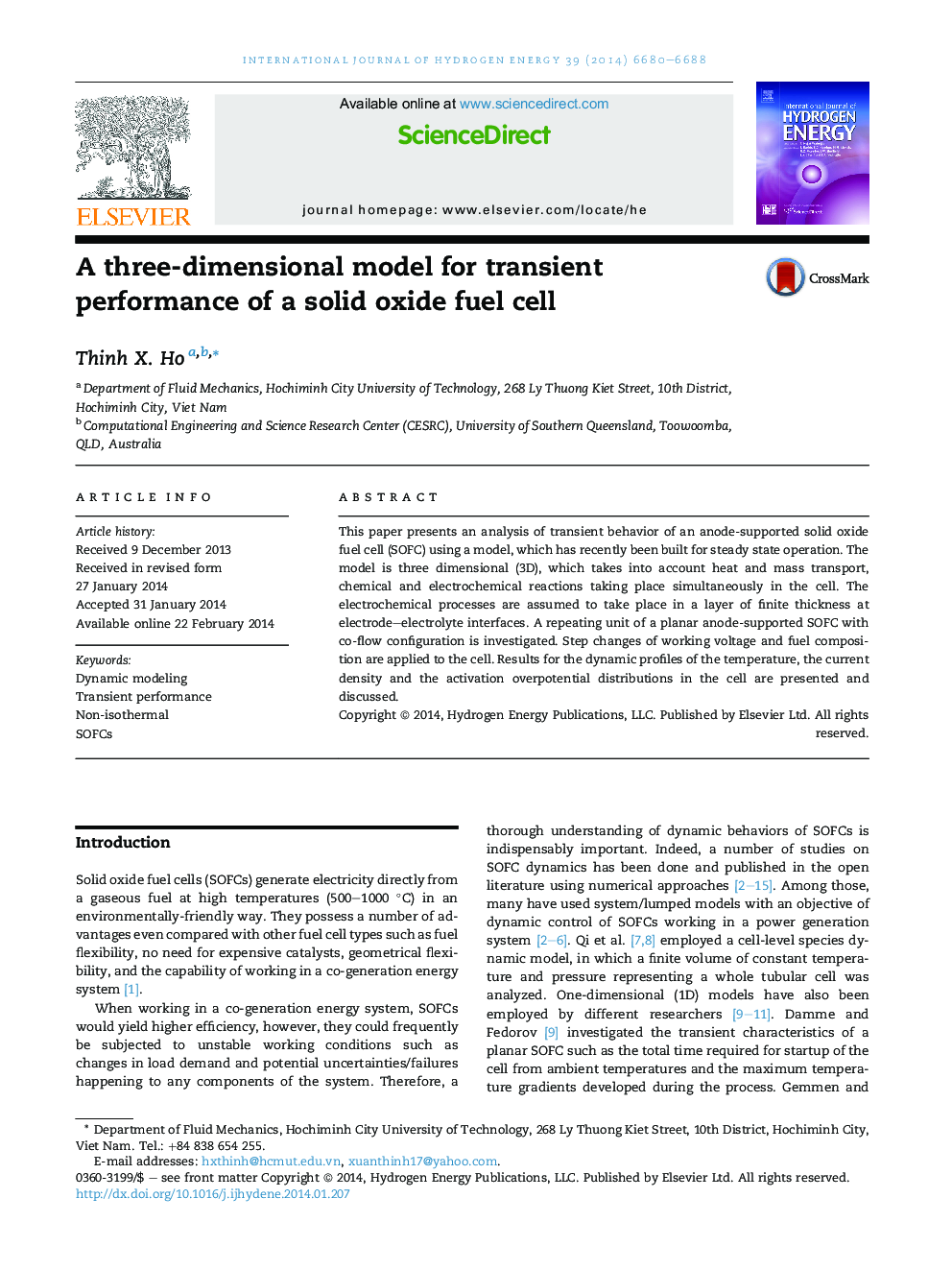| Article ID | Journal | Published Year | Pages | File Type |
|---|---|---|---|---|
| 1272861 | International Journal of Hydrogen Energy | 2014 | 9 Pages |
•We employ a non-isothermal and fully three-dimensional model.•We assume the electrochemical processes to take place in a layer of TPBs.•A single computational domain covering an entire unit cell is used.•Step changes in the output voltage and fuel concentration are applied.•Overshoot and undershoot in the activation are found along the cell length.
This paper presents an analysis of transient behavior of an anode-supported solid oxide fuel cell (SOFC) using a model, which has recently been built for steady state operation. The model is three dimensional (3D), which takes into account heat and mass transport, chemical and electrochemical reactions taking place simultaneously in the cell. The electrochemical processes are assumed to take place in a layer of finite thickness at electrode–electrolyte interfaces. A repeating unit of a planar anode-supported SOFC with co-flow configuration is investigated. Step changes of working voltage and fuel composition are applied to the cell. Results for the dynamic profiles of the temperature, the current density and the activation overpotential distributions in the cell are presented and discussed.
